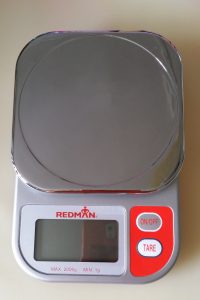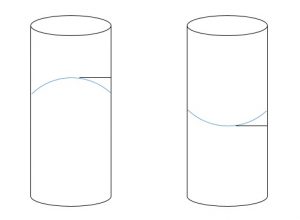All scientists measure time, temperature, mass and volume differently. However, in order to standardise and improve communication, the Standard International Unit (S.I. unit) is used.
Measurement of Time
- The S.I. unit for time is second (s)
- Other units for measuring time include: minute (min) and hour (h)
- Some of the instruments used to measure time (especially in the laboratories) are: stopwatches, ticker tape timer
- Stopwatches are the most commonly used instruments as they are quite accurate (to about 0.01 s), is cheap, easy and convenient to use
- A ticker tape timer is more commonly used in physics experiments to analyse the motion of an object
Measurement of Temperature
- The S.I. unit for temperature is Kelvin (K)
- Other units for measuring temperature include: Celsius $(^{\circ}C)$ and Fahrenheit $(^{\circ}F)$
- The Kelvin scale is related to the Celsius scale by the equation: Temperature in K = Temperature in $^{\circ}C$ + 273
- Some of the instruments used to measure temperature: mercury thermometer, clinical thermometer, data logger with temperature sensor attached to it
- A mercury thermometer can measure temperatures ranging from $-10 ^{\circ}C$ to $110^{\circ}C$, with each division measuring $1^{\circ}C$ change in temperature. It has an accuracy of $\pm 0.5 ^{\circ}C$, is cheap and easy to use
- A data logger is more commonly used in field experiments where the data is collected over long periods. The temperature measured is more sensitive and accurate than that from a mercury thermometer. (A data logger can also measure humidity of an environment, pH of fluids etc)
Measurement of Mass
- The S.I. unit of mass is kilogram (kg)
- Other units include: gram (g), tonne
- Some of the instruments used to measure mass: beam balance, electronic balance
- A beam balance is seldom seen in chemistry labs nowadays as compared to an electronic balance. The latter is precise (has an accuracy of up to 0.01 g) and fast in obtaining the mass
Measurement of Volume
- The S.I. unit of volume is cubic metre ($m^{3}$)
- Other units include: cubic centimeter ($cm^{3}$), litre (l), millilitre (ml)
- 1 litre (l) = 1 cubic decimetre ($dm^{3}$) = 1000 cubic centimetres ($cm^{3}$)
- 1000 litre (l) = 1 cubic metre ($m^{3}$)
- The following table shows some of the common apparatus used to measure volume:
| Apparatus | Accuracy |
|---|---|
| Beaker | Used when precision is not needed. Can measure up to $50 \text{ cm}^{3}$ of liquid. |
| Measuring cylinder | More accurate than a beaker. Can measure up to the nearest $\text{cm}^{3}$. |
| Burette | Can precisely measure the volume of a liquid to the nearest $\pm 0.1 \text{ cm}^{3}$. It has a graduated scale in divisions of $0.1 \text{ cm}^{3}$. |
| Pipette | Can precisely measure fixed volumes of liquid like $25 \text{ cm}^{3}$ or $50 \text{ cm}^{3}$. |
When a liquid is poured in a glass container, there would be a curved surface at its top. This curved surface is called a meniscus. To accurately determine the volume of the liquid, read at the level of the liquid to prevent parallax error. If the meniscus is concave, read the scale at the bottom of the meniscus. If the meniscus is convex, read the top of the scale where the meniscus is.


I just wanted to quickly say that this is one of the most useful websites I’ve seen when it comes to basic measurements information and it is very well layed out and easy to follow! It had everything I was looking for in one place which is rare!
Thank you so much for publishing this!!
You can mention only the accurate apparatus ( as a table) used to measure time, temperature, mass and volume.